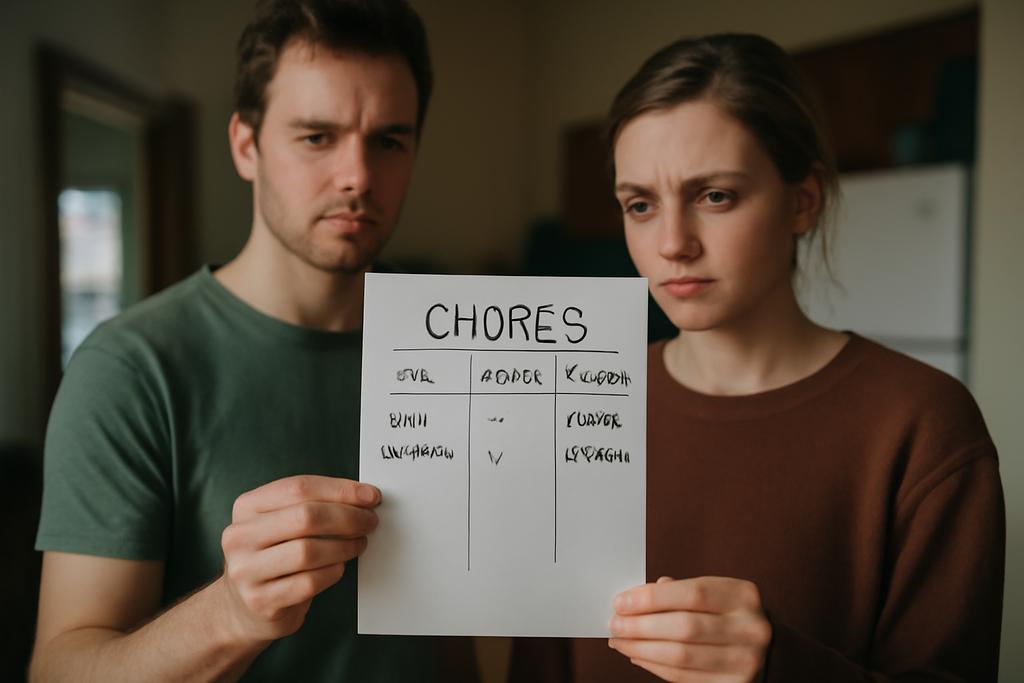The seemingly simple act of dividing chores fairly among a group of people is surprisingly complex. Imagine trying to allocate household tasks—dishwashing, laundry, yard work—in a way that everyone feels it’s a reasonable share. This isn’t just a matter of splitting things evenly; it’s about accounting for individual preferences and abilities. Researchers at the University of Illinois at Urbana-Champaign, Jugal Garg and Aniket Murhekar, have made significant strides in solving this problem, proving the existence of a remarkably efficient algorithm.
The Challenge of Fair Division
Fair division is a cornerstone of economics and computer science. It grapples with the fundamental question of how to allocate resources — be they desirable goods or undesirable chores — in a way that feels just to everyone involved. The problem becomes particularly thorny when dealing with indivisible items. You can’t split a single chore in half. This indivisibility introduces complexities that make achieving perfect fairness impossible in many scenarios.
One key concept is envy-freeness (EF). In a perfectly envy-free allocation, each person prefers their assigned bundle of chores to the bundle assigned to anyone else. Unfortunately, EF allocations aren’t guaranteed to exist when chores are indivisible. Consider just one chore to be divided between two people: one will always envy the other’s empty workload.
To address this limitation, researchers have developed the notion of envy-freeness up to one chore (EF1). An allocation is EF1 if each person prefers their own bundle to the bundle of any other person, after removing at most one chore from their own assignment. While this relaxes the strict requirements of EF, it remains a challenging problem. The problem gets even harder when you add an additional requirement: the solution must also be Pareto optimal (PO). In a PO solution, it’s impossible to make one person better off without making another worse off. That means no free lunches.
A Breakthrough in Chore Allocation
Garg and Murhekar’s work builds on recent progress in the field, including a significant breakthrough by Ryoga Mahara. Mahara demonstrated the existence of allocations that are both EF1 and PO. This was a crucial stepping stone, as Garg and Murhekar’s algorithm uses such an allocation as its starting point.
Their contribution is a novel algorithm that refines this EF1 and PO allocation into something even better: a 2-EFX allocation. Think of this as an allocation where anyone can at most envy another person’s bundle after removing a single chore from their own. This 2-EFX guarantee shows that even with indivisible chores, it’s always possible to get incredibly close to a perfectly fair division.
The significance of their work isn’t simply that a 2-EFX allocation exists; it’s that they’ve proven it through a remarkably elegant and efficient algorithm. Their approach uses a series of carefully designed “chore swaps.” These swaps involve transferring chores between people in a systematic way, gradually refining the initial allocation until the 2-EFX condition is met. This process isn’t arbitrary; it’s guided by rigorous mathematical principles, ensuring that the fairness improves with each swap.
The Power of a Framework
The beauty of Garg and Murhekar’s work lies in its generality. Their algorithm isn’t a one-off solution. They’ve created a flexible framework that can be used to tackle a variety of fair division problems. They demonstrate its power by showing how it can be easily adapted to reproduce previous results, such as proving the existence of 4-EFX allocations (a slightly less precise form of fairness) and algorithms for specific types of chore allocation problems. This unified framework offers a powerful tool for future research into fair division.
Implications and Future Directions
This research has important implications for various real-world applications. Consider scenarios involving the allocation of tasks in collaborative projects, the distribution of responsibilities in a household, or even the assignment of shifts in a workplace. Their findings offer a clearer path toward algorithms that produce fairer and more efficient divisions of labor.
However, the journey toward perfect fairness in chore allocation isn’t over. The algorithm’s efficiency and precision are limited by the starting allocation, which itself might be computationally expensive to obtain. Further research could explore more efficient ways to find such starting points, possibly reducing the computational burden of achieving almost-perfect fairness. The potential for extension into other domains, such as the division of goods rather than chores, is also an exciting area of future exploration.
In conclusion, Garg and Murhekar’s work provides a significant leap forward in our understanding of fair division, offering an elegant and efficient approach to a complex and persistent problem. Their work is a testament to the power of theoretical computer science in addressing practical challenges. Their algorithm might not completely eliminate chore envy, but it gets impressively close.










